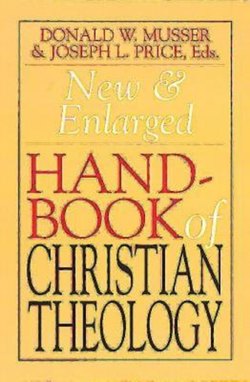Читать книгу New & Enlarged Handbook of Christian Theology - Donald W. Musser - Страница 14
На сайте Литреса книга снята с продажи.
ОглавлениеALIENATION
Alienation is one of the virtually indefinable terms that distinguishes the spirit of its time. Two distinctions, however, help to establish clarity from the chaos of its various uses. The first distinction emerges out of the contrast between alienation and estrangement. Works like Dostoevski’s Notes from the Underground or Camus’s The Stranger have engraved the image of the modern anti-hero in current thought. Out of the dark and irrational depths of the anti-hero arises estrangement from the self and the loss of a worldly anchorage. Although the individual experience of alienation may be as profoundly irrational as that of estrangement, alienation more properly derives from a social malformation.
Second, alienation is not adequately defined as a secularized version of the concept of sin. More adequately, it is understood as a strikingly modern way of defining evil as it infects the entire social order. As such, it inevitably has religious implications. Alienation takes its place beside the concepts of shame and guilt as an alternative expression of the way a society experiences and symbolizes evil.
Although the term in its verb form is of Latin origin and has been used since ancient times, G. W. F. Hegel established the paradigm for the modern understanding of alienation in his Phenomenology of the Spirit. Hegel presents alienation as a necessary and recurrent moment in the self-realization of both finite and Absolute spirit. Freedom is empty self-assertion unless it embodies itself in the objective structures of reality. Yet initially the self confronts the world as something that stands over against it. Alienation derives from the inability of self-conscious, self-determining realities to find themselves reflected in the objective structures of the historical world. The Phenomenology traces the stages of the becoming of Absolute spirit through the human struggle to achieve freedom in the mutual recognition of self and other.
At least five traits are common to virtually all theories of alienation after Hegel:
1. Alienation is a product of history. All theories assume that alienation takes many forms and that each form is rooted in its historical setting. These malformations are a product of human action and can, therefore, be transformed. Theories of alienation are always accompanied by a theory of liberation that overcomes alienation.
2. Alienation is the antithesis to self-determination. A theory of alienation and liberation presupposes some vision of the truly human. Given the historical character of alienation, these visions commonly stress agency and self-determination as central to human life. The substance of our vision of the truly human is, therefore, historically relative. Numerous African American and feminist theologians, in particular, have insisted upon the situated character of all theological reflection.
3. Alienation is a systemic, structural deformation of the social world. Evil is present not as a social problem that can be compartmentalized but as a malignancy of the whole. To devise a systemic theory of alienation the theologian draws upon some critical social theory. Various theories trace the genesis of alienation to a single root, such as racism, sexism, or classism. Others reject monocausal theories as unhistorical and inadequate to the complexity of evil. These theories examine what Rosemary Ruether calls the “interstructuring” of different forms of alienation. Cornel West, among others, argues that theologians must devise criteria, including theological criteria, for selecting an adequate social theory.
4. Alienation manifests itself in some form of false consciousness. Marx’s famous criticism of religion in his Critique of Hegel’s Philosophy of Right stressed the role of self-deception in the loss of self that occurs in an alienated condition. For Karl Marx, religious ideas were the quintessential expression of false consciousness, the flowers entwined in the economic and political chains that imprison us. Subsequent to Marx, Walter Rauschenbusch, Reinhold Niebuhr, and Paul Tillich stressed a similar theme in their theories of the idealization of evil, pretentiousness, and the demonic. Current thinkers argue that theology must devise a critique of ideology if it is to respond to alienation effectively.
5. A theory of alienation implies critical reflection on praxis. The immediate followers of Hegel, the “Young Hegelians” who included Ludwig Feuerbach and Marx, did add one important element to the modern concept of alienation. They took Hegel’s concept and transformed it into a theory of the crisis of the age designed to alter the course of history. A theory of alienation became critical reflection on praxis, that is, a model composed of the above four elements that discerns within the present crisis the possibilities for world-transforming action.
Like any paradigm of evil, the concept of alienation and liberation has its limits. Theories of alienation tend to obscure issues of personal guilt and traditional questions of theodicy. According to thinkers like Hannah Arendt, the concept of freedom as creation of and participation in a constitutional order is clouded in the close linkage of alienation and liberation. Yet these concepts, developed in a multitude of competing models, remain an indispensable vantage point for addressing modern embodiments of evil.
CHARLES R. STRAIN
Bibliography
Gregory Baum, Religion and Alienation.
Rosemary Radford Ruether, New Woman/New Earth: Sexist Ideologies and Human Liberation.
Richard Schacht, Alienation.
Charles R. Strain, “Ideology and Alienation: Theses on the Interpretation and Evaluation of Theologies of Liberation,” Journal of the American Academy of Religion 45 (1977): 473-90.
Cornel West, Prophesy Deliverance: An Afro-American Revolutionary Christianity.
Cross-Reference: Autonomy, Black Theology, Evil, Feminist Theology, Liberation Theology–Latin American, Marxist Theology, Sin.
ALLEGORY (See HERMENEUTICS, METAPHOR.)
